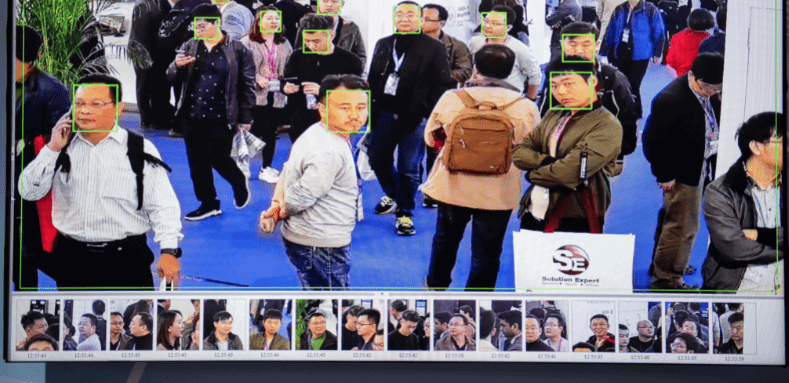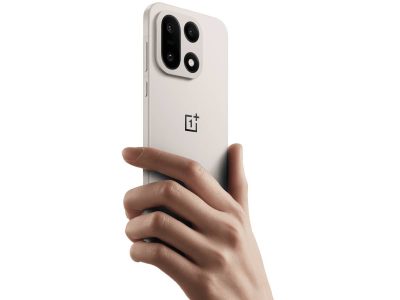With Delhi ranking in the top 20 cities with the most cameras in the world, does it translate to lower crime rates? And how does it affect privacy? Patriot takes a look
When talking about mass surveillance using an endless number of CCTV cameras with facial recognition software, the names of countries like China and the USA come to our mind. However, surprisingly, India does not lag far behind. And Delhi stands amongst the top contenders for the city with the highest density of cameras per square mile in the country, which is making people more vulnerable to state-led surveillance.
Delhi stands at the 16th position in the list of cities with the most CCTV cameras in the world, with 551,500 cameras for 16,349,831 people, which is around 33.73 cameras per 1,000 people. And stands at the top in the list of top 20 most surveilled cities in the world in cameras per square mile with 551,500 cameras for 302 square miles that is 1826.58 cameras per square mile
Cameras and Facial Recognition Technology (FRT) — a lethal combination
On 22 Dec 2019, PM Narendra Modi`s rally at Ramlila Maidan was the first known political rally where Delhi Police used facial recognition software to screen spectators. For a long time, Delhi Police has been using such techniques to capture spectators at major public events in the city. The footage is then fed to AFRS which extracts “identifiable faces” of the protesters to its dataset. Once extracted, the police then run manual check-ups, say sources, to identify “habitual offenders” and “rowdy elements”
According to a report by The Indian Express, Delhi Police spokesperson said “Any FRS (facial recognition software) would hold its utility only if the related database was qualitatively and quantitatively substantial. The initial focus was on security-related aspects of the Independence Day and Republic Day arrangements, achieved by building up-to-date datasets of terror suspects etc.
Home Minister, Amit Shah, on 12 March 2020 informed the Rajya Sabha that over 1,900 faces have been identified through Facial Recognition Software (FRS) for inciting violence in the national capital during the Delhi Riots.
N Shrivastava, Commissioner Delhi Police on 19 Feb 2021, said in a media report that “Of 231 such arrests, 137 persons were identified through our facial recognition system. The FRS was matched with police criminal records, and many accused were caught,” he said at the Commissioner’s annual press conference at Delhi Police headquarters.
“Over 94 accused were identified and caught with help of their driving licence photos and other information,” he added. Delhi Police in March 2021 said, “so far, 42 criminals have been arrested with the help of this feature, while 18,968 FRS scans were conducted by beat staff till March 23, 2021”.
These statements clearly point that the Delhi Police is using Facial Recognition Technology to trace suspected criminals.
Does high camera density translate to lower crime rates?
The simple answer is, no. Crime prevention is often the primary argument for increased CCTV surveillance, but the Comparitech index found that more cameras don’t necessarily reduce crime rates. “Crime is often the reason cited by cities when installing cameras, but we found little correlation,” says Rebecca Moody, a researcher with Comparitech. “A higher number of cameras just barely correlates with a lower crime index. Broadly speaking, more cameras doesn’t necessarily reduce crime rates.”
According to the NCRB Report 2021, IPC Crimes reported in Delhi was 245,844 in 2020 while there were 294,653 cases in 2019 and 225977 in 2018, which shows that there is no significant decrease in the crimes despite the heavy surveillance.
Surveillance vs privacy
Anushka Jain, Associate Counsel (Surveillance & Transparency) of IFF says that Delhi Police is using facial recognition technology without any legal framework in place to regulate it. This is violative of the Hon’ble Supreme Court’s decision in Justice K.S. Puttaswamy vs Union of India. It states that any justifiable intrusion by the State into people’s right to privacy protected under Article 21 of the Constitution must conform to certain thresholds.
According to The Internet Freedom Foundation (IFF), there are currently 75 ongoing facial recognition projects in India, including the Automated Multimodal Biometric Identification System (AMBIS) in Maharashtra to FaceTagr in Tamil Nadu. Of these, approximately 19 are being developed and deployed by state-level police departments and the NCRB for the specific purpose of security and surveillance.
These thresholds are legality where the intrusion must take place a defined regime of law i.e There must be anchoring legislation, with a clear set of provisions; a necessity which justifies that the restriction to people’s privacy is needed in a democratic society; proportionality where the Government must show among other things that the measure being undertaken has a rational nexus with the objective.
It is imperative to note here that in 2018, Delhi Police reported that the facial recognition system on trial was operating at an accuracy rate of 2%. In 2019, when the accuracy rate fell to less than 1 %, the Ministry of Women and Child Development reported that the system couldn’t even accurately distinguish between boys and girls.
Experts on the subject thus raise concerns about the use of this technology as it is highly inaccurate and can lead to exclusion and discrimination.
Experts are also of the view that this technology is making sections of the society vulnerable to over-policing, especially amongst the minority community and have appealed to the police and relevant authorities to halt the entire process.
Across the world, misuse of the technology has been witnessed on many occasions, wrongful arrests, intrusive surveillance and crackdown on protests all form part of this misuse. So much so that in many cities like San Francisco and Boston its use has already been banned, the EU is also thinking of the same. However, the Indian government in all its wisdom has chosen to further increase the use of the technology.
Recently, in the violence that erupted at Red Fort during the farmers protest, the Delhi police used FRT to identify and then arrest 200 protestors. Earlier, Delhi as well as UP Police used the same technology to identify and arrest protestors in the Anti-CAA movement.
In many public schemes like Public Food Grain Distribution and other government subsidised programs, FRT is being used to authenticate the identity of the individuals. Aadhar also uses the same technology to identify the face of the individual for many purposes.
What the privacy laws say
India does not have a stand-alone personal data protection law to protect personal data and information shared or received in a verbal or written or electronic form. Though protections are available, they are contained in a mix of statutes, rules and guidelines.
The most prominent provisions are contained in the Information Technology Act, 2000 (as amended by the Information Technology Amendment Act, 2008). It is the primary law in India dealing with cybercrime and electronic commerce. SPDI Rules, under the act as the name suggests, only cover data and information which is exchanged in an electronic form and not those received through non-electronic communication form.
Thus it seems that despite there being clear regulations around the use of Facial recognition technology, it is being used on a wide scale in the Capital. And whether it will have any long term benefits when compared with the privacy concerns it carries, is anyone’s guess.
(Cover: Getty Images)





